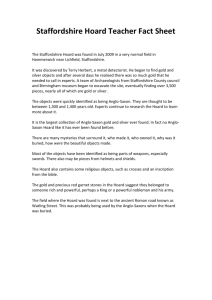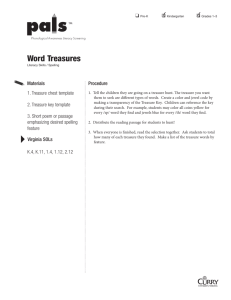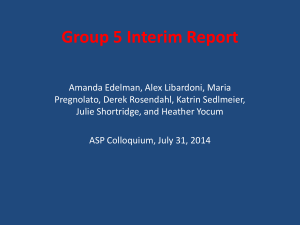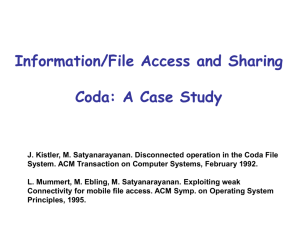Those are some questions I'll have to give some thought to
advertisement
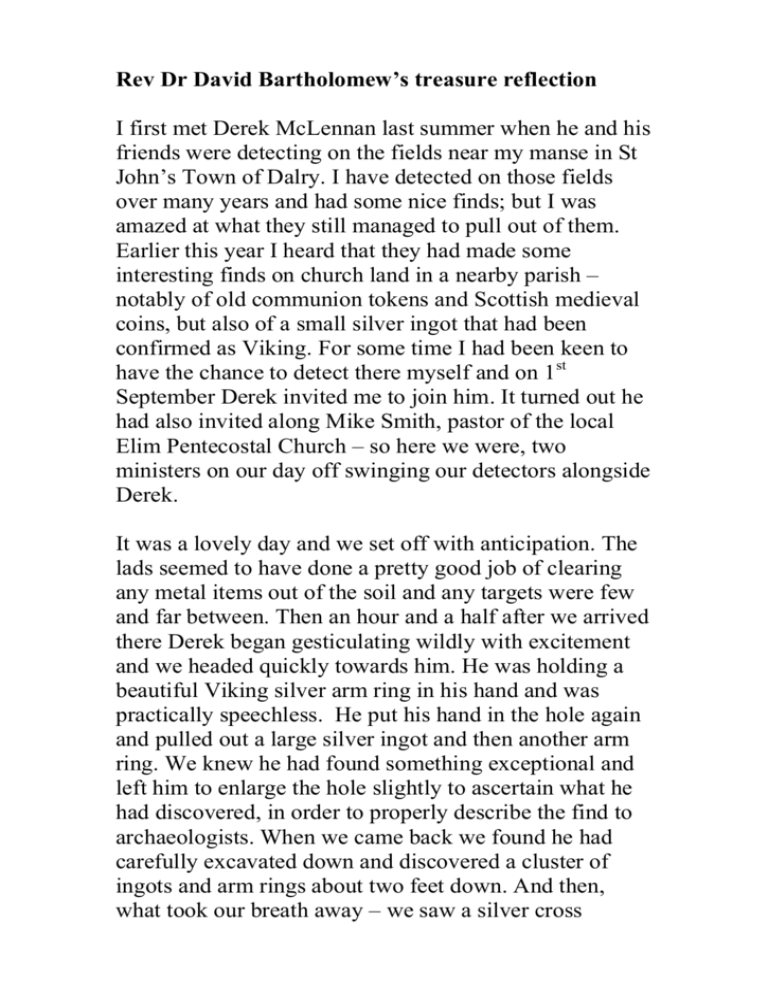
Rev Dr David Bartholomew’s treasure reflection I first met Derek McLennan last summer when he and his friends were detecting on the fields near my manse in St John’s Town of Dalry. I have detected on those fields over many years and had some nice finds; but I was amazed at what they still managed to pull out of them. Earlier this year I heard that they had made some interesting finds on church land in a nearby parish – notably of old communion tokens and Scottish medieval coins, but also of a small silver ingot that had been confirmed as Viking. For some time I had been keen to have the chance to detect there myself and on 1st September Derek invited me to join him. It turned out he had also invited along Mike Smith, pastor of the local Elim Pentecostal Church – so here we were, two ministers on our day off swinging our detectors alongside Derek. It was a lovely day and we set off with anticipation. The lads seemed to have done a pretty good job of clearing any metal items out of the soil and any targets were few and far between. Then an hour and a half after we arrived there Derek began gesticulating wildly with excitement and we headed quickly towards him. He was holding a beautiful Viking silver arm ring in his hand and was practically speechless. He put his hand in the hole again and pulled out a large silver ingot and then another arm ring. We knew he had found something exceptional and left him to enlarge the hole slightly to ascertain what he had discovered, in order to properly describe the find to archaeologists. When we came back we found he had carefully excavated down and discovered a cluster of ingots and arm rings about two feet down. And then, what took our breath away – we saw a silver cross poking out from beneath the pile, with a delicate wound silver chain attached to it. At that point we knew we had to call an archaeologist to take over the recording and lifting of the hoard Derek had found. By the time he eventually came some of Derek’s detectorist friends had also joined us. Andy, the county archaeologist, proceeded to enlarge the hole and we helped with sieving of the soil. He then recorded carefully each item as it was lifted. When he came to the bottom of the pile we watched with excitement as he lifted the cross with great care and turned it over to reveal rich decoration, a work of great beauty and symbolism. Andy was convinced that we had recovered the hoard, but our detectors told us otherwise; and sure enough, four inches lower down we came across a larger hoard which we soon realised, at the very least, was going to rewrite the history of Viking influence in our part of Scotland. We have hardly started to answer all the questions thrown up by Derek’s spectacular find. But it would seem that we have artefacts from the earliest days of the church in our land. This may be the earliest silver cross of its size found in Britain and may well have originated on Lindisfarne, or even Iona. Another artefact of great beauty is a four inch long gold pin topped by what Derek and his partner Sharon consider is a cormorant-like bird. They believe that it may have been a pointer stick used with the illuminated manuscripts on Lindisfarne. I see the hoard as being a window into these troubled times – the creation of items of great beauty and their burial in times of warfare and destruction. We read in the gospels about the kingdom of heaven being like a treasure hidden in a field or a pearl of great price (Matthew 13.44-45). We are filled with wonder as we contemplate these beautiful artefacts and we speculate on who owned them and how they came to be hidden there in this field so many centuries ago. They can be a picture of the riches of our inheritance in Christ (Ephesians 1.3-10, 3.16-19) which lies waiting to be discovered, and is passed over by so many in our land unaware of the treasures of God’s grace so freely available to them. So many in our society drift along on the surface of life and don’t dig down to find a higher meaning and purpose for their lives. We marvel at what has been buried beneath our feet for so many centuries and is now revealing its secrets to us. But God has even greater riches to reveal to us as we press in to know him. And the reality also is that I find a real tension and conflict within myself as I reflect on the hoard. I have a fascination with history and trying to imagine what life was like in times past. Metal detecting feeds that fascination as it throws up artefacts all the time that are a material connection with people of earlier days. But we are called on by Christ not to store up treasures on earth, where moth and rust destroy and where thieves break in and steal (Matthew 6.19). The tension is that this earthly treasure can divert me from my primary calling to share the love of Christ with a needy world. The excitement of this amazing discovery and all the speculations and theorising that spin out from it can too easily deflect me from giving my time to the people I am called to minister amongst. I must not forget that we are called to store up treasures in heaven where moth and rust do not destroy, and where thieves do not break in and steal. ‘For where your treasure is, there your heart will be also’ (Matt. 6.21). I must not forget the greater treasure that needs to be made known. The Danish Vikings had not discovered that treasure when they buried the hoard, but in the centuries that followed they came to embrace Christ for themselves. How I long that the people of our nation might turn again to embrace the living Christ in whom is life in all its fullness. David Bartholomew
